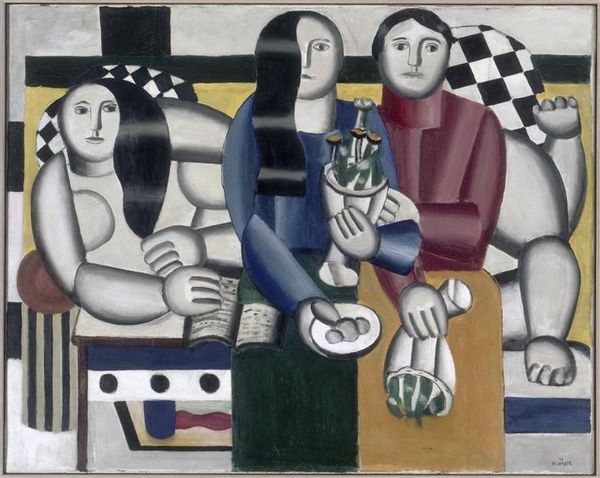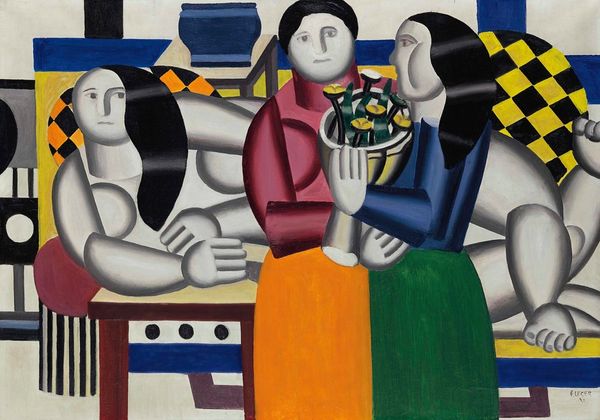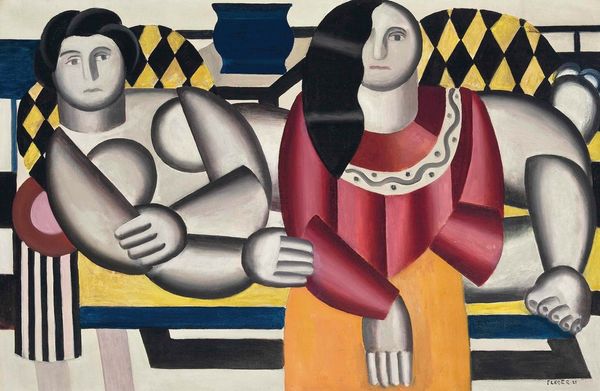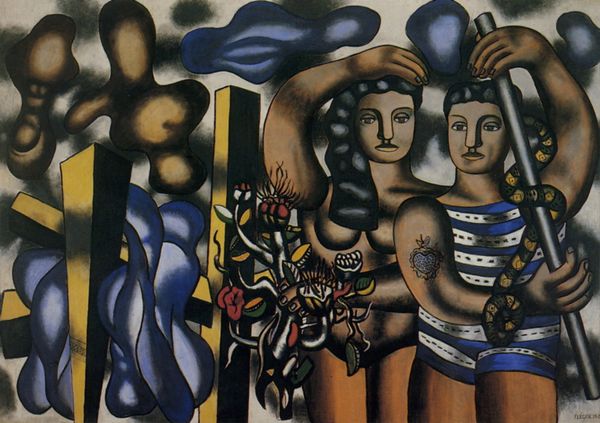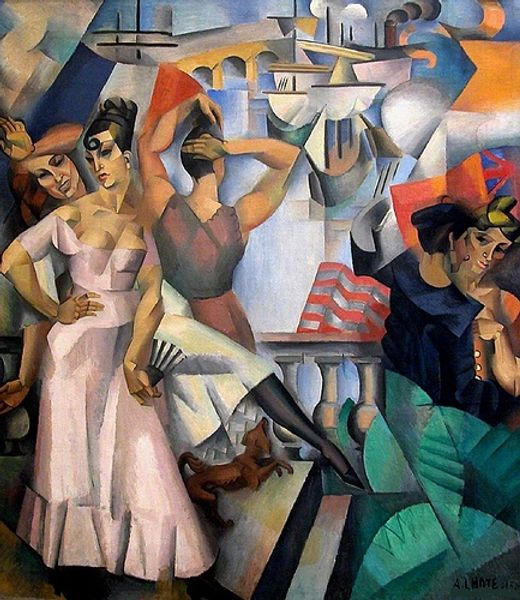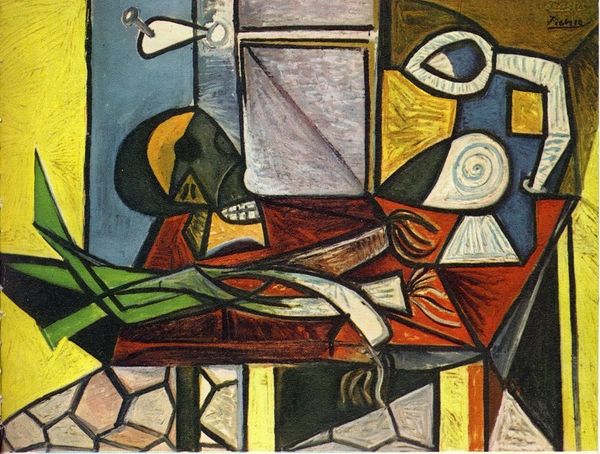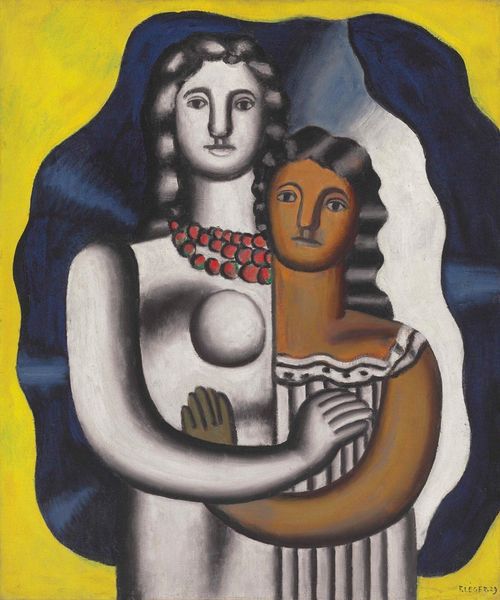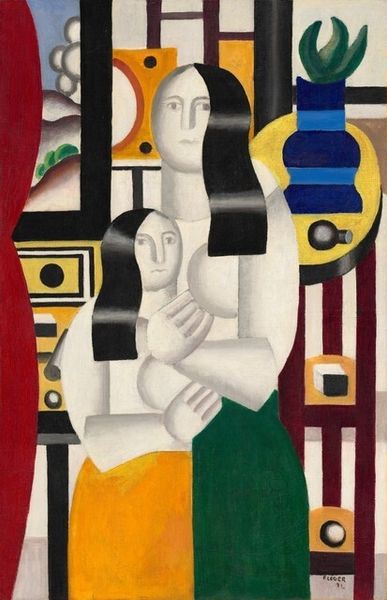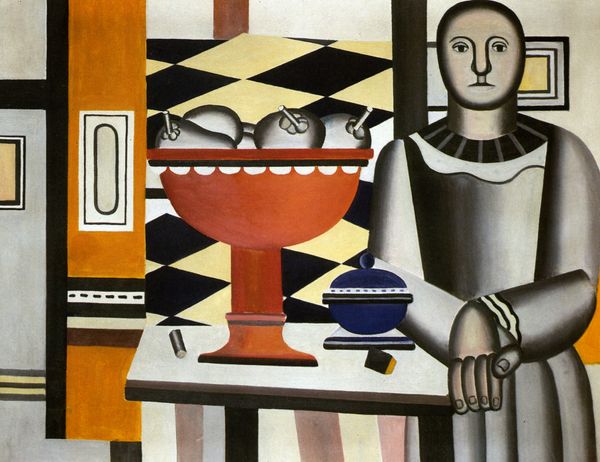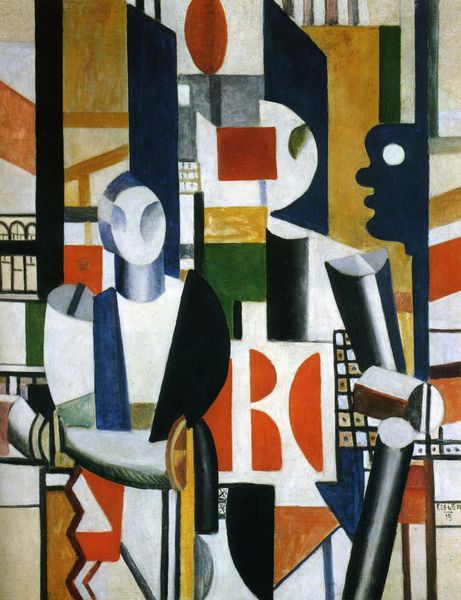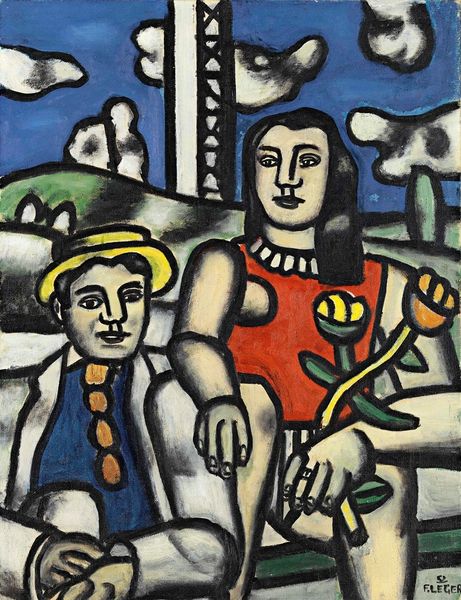
painting, oil-paint
#
portrait
#
cubism
#
painting
#
oil-paint
#
pop art
#
figuration
#
geometric
#
abstraction
#
post-impressionism
Copyright: Fernand Leger,Fair Use
Editor: We’re looking at Fernand Léger’s "Three Women with Flowers," an oil painting, and though the date is not defined it fits into his post-impressionist and cubist exploration. The geometric shapes and somewhat industrial feel contrast oddly with the delicate flowers. What catches your eye? Curator: I'm drawn to Léger's interest in how modern materials impacted subject and style. The flattened forms, almost like machine-made components, challenge the traditional notion of portraiture, don't you think? Consider the labor involved in producing these standardized geometric forms—it reflects the rising industrial age, where individual craftsmanship was slowly replaced by mass production. Editor: That's interesting, how the industrial informs the aesthetic. But isn’t the inclusion of flowers a rejection of that harshness, a bringing in of something natural? Curator: Perhaps. Or, it could be seen as Léger appropriating traditionally ‘feminine’ crafts like floral arrangement and elevating them through a mechanical depiction. It highlights how consumption itself becomes a means of artistic expression within a capitalist system. Look at the paint itself – consider the materials that would have been used for this. Were they mass-produced? High quality? Where was it produced, and what sort of societal impact did that process entail? Editor: So, even something that looks 'natural' within the painting has an industrial connection by the very nature of being represented through the means of oil paints. I never would have considered the source of materials playing such a vital role. Curator: Absolutely. Léger, here, invites us to examine the social implications embedded in every brushstroke. Editor: I guess it speaks to how even what feels like personal expression is connected to a larger world.
Comments
No comments
Be the first to comment and join the conversation on the ultimate creative platform.
